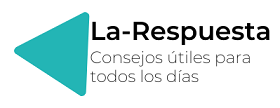¿Cómo se usa would rather y would prefer?
¿Cómo se usa would rather y would prefer?
- PREFER se usa en correlación con TO (si usamos gerundio) o con RATHER THAN (si usamos infinitivo con to) I prefer swimming to running (prefiero nadar a correr)
- WOULD RATHER se usa en correlación con THAN. I would rather swim than run (prefiero nadar a correr)
- WOULD PREFER se usa en correlación con RATHER THAN.
¿Cómo es el uso de would rather y would prefer?
Diferencia importante entre «would prefer» y “would rather”: El verbo que sigue a “would rather” va en infinitivo sin “to”. En cambio, el verbo que sigue a “would prefer” puede ir seguido de un verbo en infinitivo con “to” o en «-ing»; no hay mucha diferencia de significado entre una u otra opción.
¿Cómo hacer oraciones con would rather?
20 Ejemplos oraciones con would rather en inglés y español
- She would rather read the newspaper in the afternoon than in the morning.
- We would rather come to school by bus than walk.
- She would rather sit in the sun.
- He would rather walk to school.
- Mr.
- They would rather play tennis on Sundays than on Saturdays.
- He would rather study for his English class than for his math class.
¿Cómo hacer preguntas con would prefer?
Which of these two possessions would you prefer to possess? ¿Cuál de estos dos bienes preferirías poseer? Would you like a taco, or would you prefer a burrito? ¿Le gustaría un taco, o preferiría un burrito?
¿Cuál es la diferencia entre would rather y would prefer?
«Prefer» es un verbo transitivo que se puede traducir como «preferir», y «rather» es un adverbio que también se puede traducir como «preferir».
¿Qué va después de Rather?
Si WOULD RATHER va seguido del verbo LIKE NO significa “PREFERIR”, sino BASTANTE. Ejemplo: I’D RATHER LIKE your dress….Cuando RATHER aparece con THAN expresa preferencia y se suele traducir por EN LUGAR DE.
- I think she’d prefer to leave now RATHER THAN tomorrow.
- She likes pink RATHER THAN red.
¿Cómo se usa el Rather?
¿QUÉ SIGNIFICA RATHER? I’d rather = prefiero, preferiría. Preferiría llamarte mañana 👉🏻 I’d rather call you tomorrow.
¿Cuándo usar Pretty y quite?
«Quite» es un adverbio que se puede traducir como «totalmente», y «pretty» es un adjetivo que se puede traducir como «bonito».
¿Que nos indican los adverbios de lugar?
Los adverbios de lugar son palabras que sirven para indicar el sitio donde se encuentra algún ser u objeto. Y estos pueden ser: adelante, atrás, adonde, ahí, aquí, allí, allá, arriba, cerca, delante, detrás, donde, encima, lejos, etc.
